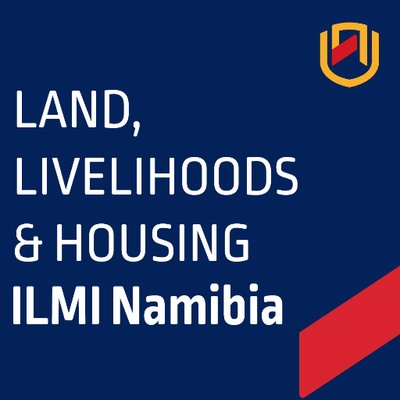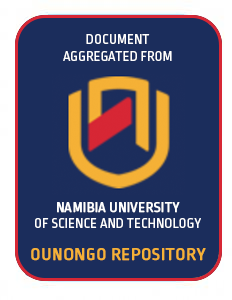Location
The Integrated Land Management Institute is a centre of the Faculty of Natural Resources and Spatial Sciences (FNRSS) at the Namibia University of Science and Technology (NUST) committed to develop reputable and multidisciplinary research and public outreach activities in the field of land, administration, property, architecture and spatial planning.
It was originally established 2006 and conceived as an arm of the Department of Land Management in order to undertake applied research, consulting services, and training courses.
As from 2015, activities at ILMI will be guided by the Land, Livelihoods and Housing programme, while remaining open to new collaborative research, training, and outreach activities.
ILMI has a space at the Department of Land and Property Sciences (DLPS) and most events currently take place at the Seminar Room of the Department of Architecture and Spatial Planning (DASP). Smaller events and meetings take place at the CLPS House.
The Department of Land and Property Sciences (DLPS) has recently been recognised by the African Union (AU) through the Land Policy Institute (LPI) as a Centre for Excellence in Land Governance for Africa (NUST - NELGA Hub).
Members:
Resources
Displaying 1 - 5 of 26Ancestral land
Ancestral land refers to ‘land of ancestors’. That is the land occupied by ones’ forebearers for generations and left something behind of value for current and future generations. There are usually contestations as to which ancestors the land
belongs because of the history of internal migration and of displacements by stronger nations (tribes).
Urban land delivery
There has been rapid growth in urban populations in Namibia (Pendleton et al, 2014). This growth is amongst predominantly amongst less educated, poorer migrants from rural areas in search of opportunities in urban areas. From the data available the estimated shortfall of either titled land or houses appears to be above 150 000 and increasing at about 11 000 per year (Weber, 2017). This trend of urbanisation is occurring not only in Namibia but across the world, particularly now in developing countries.
Informal settlements
Namibia is moving towards an urbanised country. This is illustrated by the fact that at independence Namibia was only 28% urbanized by 2011 urbanization has already grown to 42% and current projections are that by 2020 urbanization would by 66% and more than 70% by 2030. As the urban population is growing the need for serviced land and housing is also growing. As Namibia has failed to respond through appropriate strategies to facilitate this change in the human geography of the country it resulted in the growth of poorly serviced informal settlements.
Communal land
Communal land is one of the land tenure systems in Namibia, the other being freehold land tenure system. At independence in 1990,Namibia resolved to retain communal land on the basis that majority of the population derived their livelihoods from communal land.Notwithstanding the increasing urban population in the country since independence, the majority of the Namibian population still lives in the communal areas, and many of the urban-based population continue to have close relations in rural areas.
Housing
Namibia is compelled to observe and to undertake efforts to realise the right to adequate housing, since it has ratified the International Covenant on Economic, Social and Cultural Rights in 1994.



